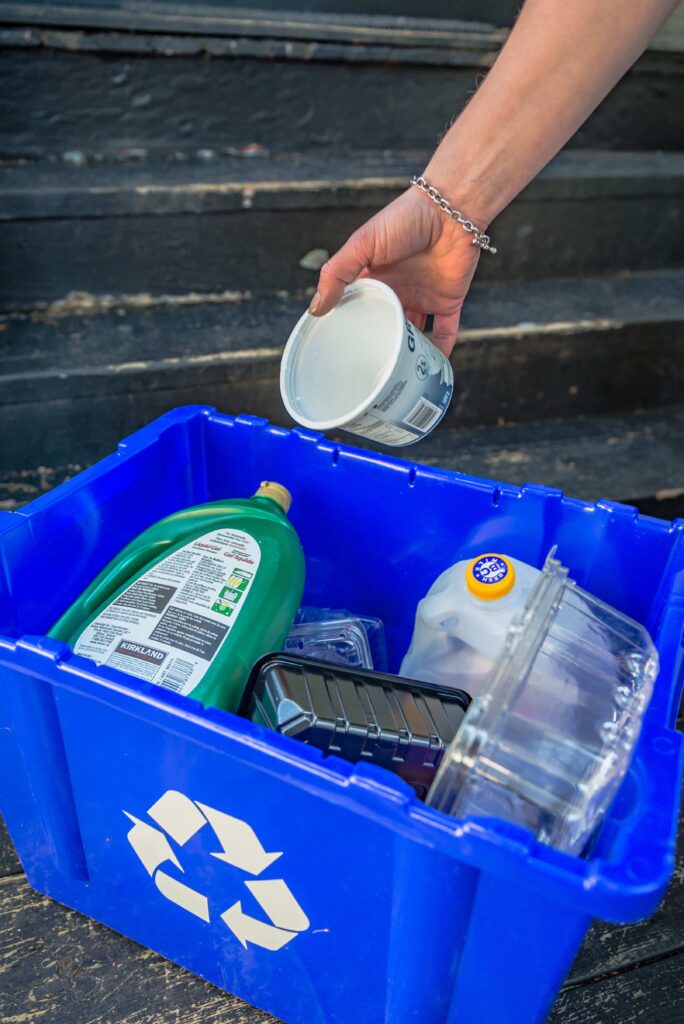You may have heard the term before, but what exactly is contamination in the context of residential recycling? Simply put, contamination is material that is not accepted for collection in Recycle BC’s curbside or multi-family packaging and paper collection program.
Contamination, in this context can include one or more of the following examples:
- Material that is not packaging or paper
- Material that is not recyclable with today’s recycling technology
- Hazardous material or hazardous containers with any contents remaining
Other conditions that cause recycling challenges include:
- Material collected in a way that doesn’t allow the materials to be recovered for recycling (e.g. recyclables tied in a small plastic bag before being placed in your recycling collection container)
- Containers with more than 10% of contents remaining
- Material mis-sorted into the wrong bin
Why is recycling properly important?
Safety:
Certain types of contamination can present significant health and safety issues for both collection and post-collection staff. Hazardous materials such as medical sharps, propane tanks, flammable liquids and batteries can be extremely dangerous when collected, and in some cases have caused fires in processing facilities in BC.
Ability to be recycled:
Not recycling properly can reduce the ability to effectively recycle material or meet the requirements of recycling markets. If the material can be recovered, the commodity value of recyclables can be reduced. In some cases, material may be recyclable, but only when collected separately from other materials and very clean. Some material is not well suited to being mixed with other recyclables in curbside/multi-family recycling programs. Materials like plastic bags and foam packaging should be taken to a Recycle BC depot for recycling. We want to ensure we can effectively recycle what is collected from residents in the most appropriate market for the materials, keeping them local when possible.
How does Recycle BC measure the contamination rate for curbside and multi-family collectors?
Recycle BC routinely completes composition audits of the packaging and paper recycling received from Recycle BC collectors, like municipalities. Collectors are randomly selected for detailed composition audits. Larger municipalities generally have more composition audits completed than smaller municipalities. Once selected, a cross-section of the targeted recycling load is analyzed, material is categorized and weighed to determine the breakdown, by weight, of a number of different categories and sub-categories including the weight of contamination.
Collection materials and methods
The list of accepted materials across the province is consistent, however each service area can choose how they collect recycling. Some collectors collect single stream recycling (containers and paper placed in one collection bin) and others collect multi-stream recycling (material separated into different bins by material type: paper, containers and, in some cases, glass). In addition, the type of collection container used varies (carts, blue boxes, bags, etc.). We find multi-stream collection consistently results in a lower contamination rate than single stream.
Reducing contamination
We strive to continually decrease contamination rates. Recycle BC, who is directly responsible for recycling service in some municipalities and has an overarching provincial education mandate, and our partner collector municipalities engage in ongoing recycling operations and education activities targeted towards residents to help ensure contamination rates are reduced and the materials collected can effectively and efficiently recycled. These operational and educational activities are ongoing and we continue to work to decrease contamination rates with the support of BC’s residents, the ultimate decision-makers of what is placed in their recycling bins prior to collection. In 2019, the contamination rate for BC was around 6.5%.




